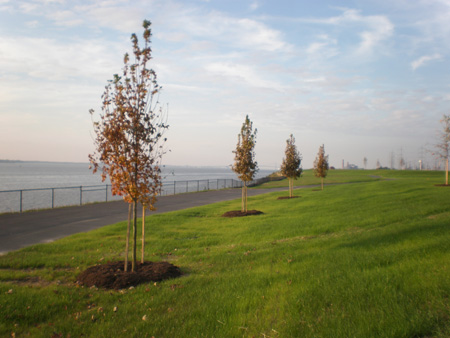Long-term stewardship (LTS) is the maintenance and monitoring of the remedial measures taken at a site to maintain the desired level of protection of human health and the environment over an extended period of time.
Remediation Section
391 Lukens Drive
New Castle, Delaware 19720
302-395-2600
Long-term stewardship is required under Delaware’s Regulations Governing Hazardous Substance Cleanup (subsection 12.7.5) and generally consists of two major components:
The DNREC Remediation Section is developing long-term stewardship guidance to help responsible parties properly perform stewardship at sites under the HSCA program.

There are several types of institutional control, including:
Environmental Covenant (EC) or deed restriction, which is placed on a site to reduce the potential for exposure to contaminants by restricting land use, activities such as digging, groundwater use at the site or requiring maintenance of the remedy or other institutional controls.
Groundwater Management Zone (GMZ), which includes a map and associated restrictive language to define the area where DNREC will restrict water supply wells. The parameters for establishing a GMZ are detailed in a Memorandum of Agreement (MOA) between DNREC Division of Water and Division of Waste and Hazardous Substances.
Once a remedial action is determined to be operational and functional, it is necessary to maintain the integrity and functionality of the remedial action. The Remediation Section provides oversight through inspections and reporting to help ensure that the responsible party maintains the remedy and the remedial action remains protective.
Long-term monitoring (LTM) is performed to determine whether the desired level of protection of the remedial action(s) is being maintained and to observe if the remedial actions goals are being achieved. This is accomplished by sampling monitoring points at regular intervals to evaluate the effectiveness of the remedy.
Site monitoring generally involves sampling groundwater and/or soil gas for contamination. Groundwater contaminants in a monitoring well are measured and evaluated to see if the concentrations are being reduced as a result of active remediation or passive remediation such as monitored natural attenuation (MNA).
Soil gas contaminant concentrations are measured using vapor points to evaluate the effectiveness of the remedy (i.e., vapor barrier or vapor mitigation system to prevent vapor intrusion or contaminant migration).
The Remediation Section is developing a standard guide for the development of long-term monitoring plans for vapor mitigation systems.
Related Topics: cleanup, gmz, groundwater, remediation, stewardship, waste and hazardous substances